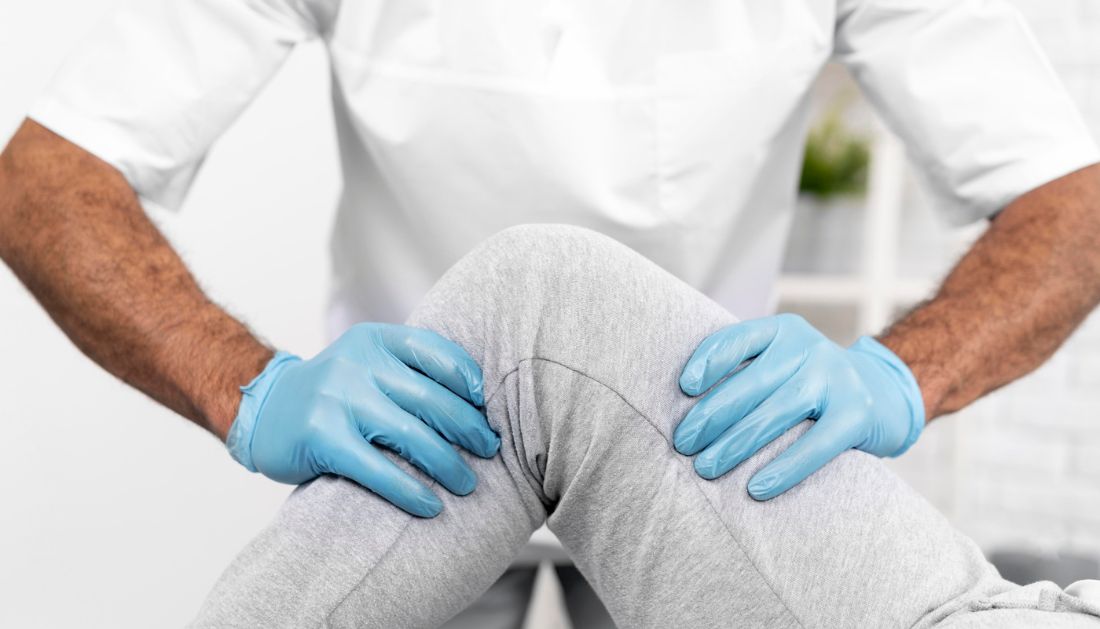

Meniscus tears are one of the most prevalent knee injuries, often leaving patients with limited treatment options and long recovery times. However, a recent breakthrough in regenerative medicine may change that. Scientists from the Perelman School of Medicine at the University of Pennsylvania have developed a 3D-printed hydrogel for Meniscus Tear Treatment, derived from cow meniscus tissue, showing promising results in pre-clinical studies published in Bioactive Materials. This innovation could significantly enhance meniscus repair, offering patients a more effective and customized solution.
Addressing the Complexity of Meniscus Injuries
The meniscus plays a crucial role as a shock absorber in the knee joint, but its complex structure makes treatment challenging. Current repair methods, including graft-based techniques, fail to replicate the natural biochemical and biomechanical properties of the meniscus, often leading to incomplete healing.
To tackle this issue, researchers engineered a hydrogel that can be tailored to the patient’s specific needs, considering factors like age, tissue stiffness, and injury location. “Our hydrogel mimics the natural properties of the meniscus, ensuring better integration and improved healing,” said Dr. Su Chin Heo, senior author of the study and assistant professor of Orthopaedic Surgery and Bioengineering in the McKay Orthopaedic Research Lab at Penn.
How 3D-Printed Hydrogel for Meniscus Tear Treatment Works
Hydrogels are soft, water-absorbing materials commonly used in medical and consumer products, from contact lenses to wound dressings. To create this innovative treatment, researchers extracted essential proteins from cow meniscus tissue, guiding new cells to become specialized repair cells for meniscus regeneration.
To minimize the risk of rejection, the team applied a decellularization process, removing any potentially harmful cellular components while preserving the essential structural framework. This method ensures biocompatibility and reduces immune response risks when implanted in the human body.
By incorporating advanced 3D-printing techniques, scientists further refined the hydrogel to match the intricate structure of the meniscus. This level of precision enhances the hydrogel’s ability to integrate seamlessly with surrounding tissue, leading to better healing outcomes compared to traditional treatments.
Promising Results in Pre-Clinical Studies
Early tests in animal models have shown remarkable success. “We’ve observed that the hydrogel seamlessly integrates with surrounding tissues, improving the overall healing process,” said Dr. Se-Hwan Lee, first author of the study and postdoctoral researcher in the McKay Lab. “This customized, bioengineered approach could provide a more effective and natural recovery compared to existing treatments.”
The research team is now advancing from small animal trials to larger animal models to further evaluate the hydrogel’s efficacy.
Future of 3D-Printed Hydrogel for Meniscus Tear Treatment
The next step for researchers is to test the hydrogel on localized meniscus tears before moving on to more complex injuries. “Once we achieve success in smaller injuries, I believe we can expand this treatment to cover larger and more challenging meniscus tears,” Dr. Heo explained.
If clinical trials confirm its effectiveness, this 3D-printed hydrogel could revolutionize orthopedic medicine, providing patients with a less invasive, more efficient, and personalized solution for knee injuries.
Funding and Research Support
The study received funding from prestigious institutions, including the National Institutes of Health (NIH), the National Science Foundation (NSF), the Department of Veterans Affairs’ CReATE Motion Center in the U.S., and the Korea Health Industry Development Institute (KHIDI). Additional support came from the National Research Foundation of Korea (NRF) and the Ministry of Science and ICT.
As research progresses, this groundbreaking hydrogel technology could become a game-changer in sports medicine and orthopedics, offering millions of patients worldwide a better path to recovery.
For more information: Lee, S.-H., et al. (2025). Precision repair of zone-specific meniscal injuries using a tunable extracellular matrix-based hydrogel system. Bioactive Materials. doi.org/10.1016/j.bioactmat.2025.02.013.
more recommended stories
 Can Ketogenic Diets Help PCOS? Meta-Analysis Insights
Can Ketogenic Diets Help PCOS? Meta-Analysis InsightsKey Takeaways (Quick Summary) A Clinical.
 Silica Nanomatrix Boosts Dendritic Cell Cancer Therapy
Silica Nanomatrix Boosts Dendritic Cell Cancer TherapyKey Points Summary Researchers developed a.
 Vagus Nerve and Cardiac Aging: New Heart Study
Vagus Nerve and Cardiac Aging: New Heart StudyKey Takeaways for Healthcare Professionals Preserving.
 Cognitive Distraction From Conversation While Driving
Cognitive Distraction From Conversation While DrivingKey Takeaways (Quick Summary) Talking, not.
 Fat-Regulating Enzyme Offers New Target for Obesity
Fat-Regulating Enzyme Offers New Target for ObesityKey Highlights (Quick Summary) Researchers identified.
 Spatial Computing Explains How Brain Organizes Cognition
Spatial Computing Explains How Brain Organizes CognitionKey Takeaways (Quick Summary) MIT researchers.
 Gestational Diabetes Risk Identified by Blood Metabolites
Gestational Diabetes Risk Identified by Blood MetabolitesKey Takeaways (Quick Summary for Clinicians).
 Phage Therapy Study Reveals RNA-Based Infection Control
Phage Therapy Study Reveals RNA-Based Infection ControlKey Takeaways (Quick Summary) Researchers uncovered.
 Pelvic Floor Disorders: Treatable Yet Often Ignored
Pelvic Floor Disorders: Treatable Yet Often IgnoredKey Takeaways (Quick Summary) Pelvic floor.
 Urine-Based microRNA Aging Clock Predicts Biological Age
Urine-Based microRNA Aging Clock Predicts Biological AgeKey Takeaways (Quick Summary) Researchers developed.

Leave a Comment